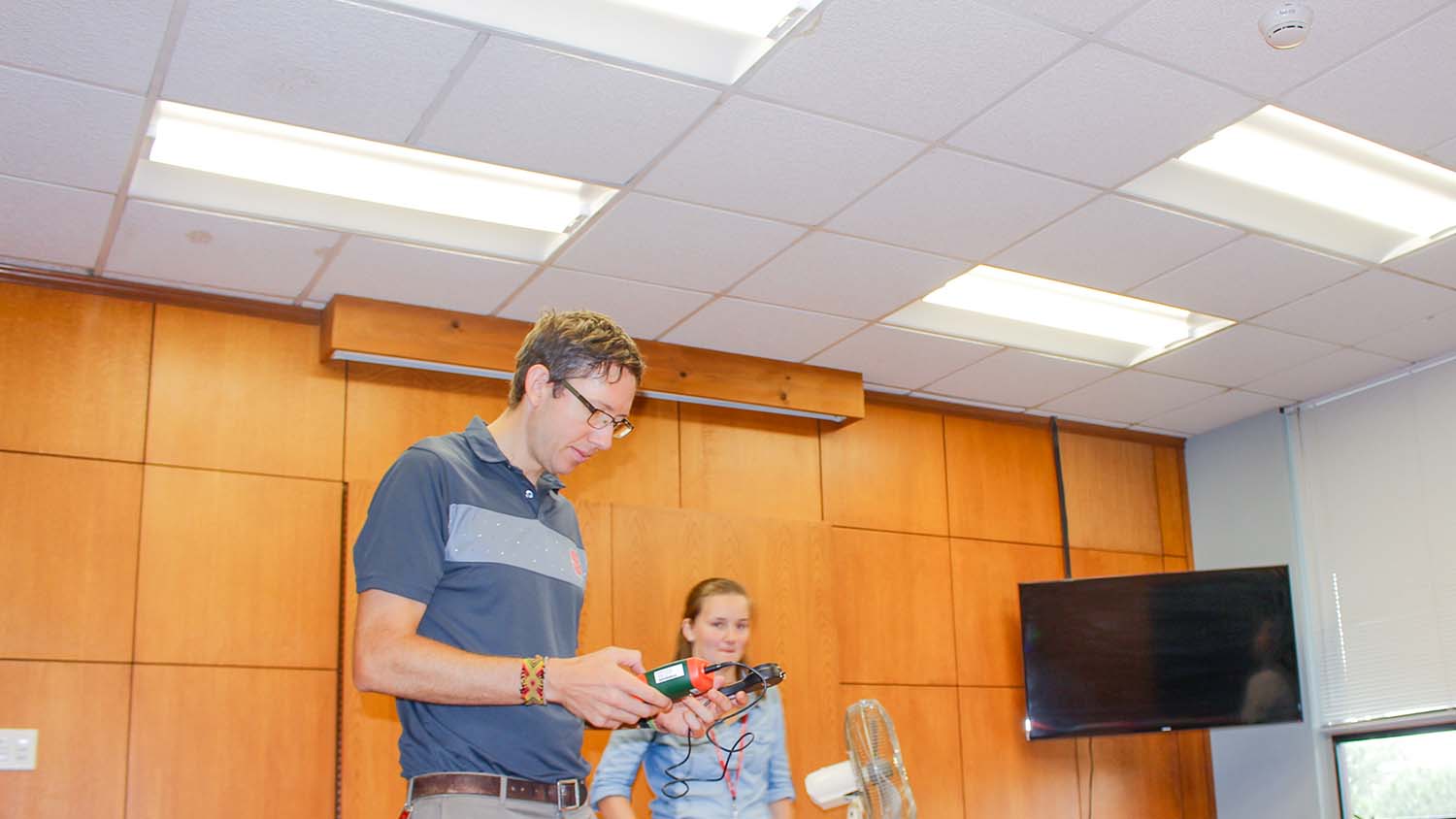Campus Buildings Get LED Upgrades

Biltmore Hall and Pulp and Paper labs recently underwent a complete lighting upgrade. New energy-efficient LED lighting has been installed in these buildings as part of an energy-saving partnership between NC State Energy Management and the College of Natural Resources.
This is the first time Energy Management upgraded an entire academic building with new light fixtures, replacing about 1,500 outdated lights with LEDs over the course of five months.
“The initial push for the lighting project came on the heels of expressed safety concerns for poorly-lit stairwells, hallways and common areas and plans to upgrade classrooms and labs that had inadequate lighting,” said Joshua Gira of the College of Natural Resources.
The original Robertson Building, which opened more than 60 years ago, and Biltmore Hall, which was added on the east side in 1968, are now known together as Biltmore Hall and Robertson Wing. The lighting project also included the relatively newer Pulp and Paper Labs building, which was added to the west side of Robertson in 1989. Many of the light fixtures in these buildings were T12 fluorescent lights which use two to three times more energy than LEDs while producing substantially less light.
“These buildings use a disproportionately high amount of energy overall. Many spaces in the building, and particularly in labs and classrooms, were underlit so new lighting promised to provide a relatively low-cost but high-impact aesthetic improvement to the building,” said Kerby Smithson, an energy project manager who managed the LED upgrade.
After 10 months of design and construction, the project was finalized in November 2019. Estimates predict nearly $30,000 in annual electricity savings.
“Other than savings, benefits include noticeably brighter and consistent lighting in the building, nicer-looking fixtures and more control of the lights, including dimmability,” said Smithson.
In addition to replacing outdated lighting, occupancy-based controls and fixture-integrated sensors were added to classrooms, lab and office spaces. With these sensors and wireless controllability, energy efficiency is maximized since the lights automatically turn off when no activity is detected. Early data collection has already shown a promising decrease in overnight electricity.
“Three of [the College of Natural Resource]’s buildings are now an example of what a green college should look like: brighter, smarter and efficient,” said Gira.
Energy Management performs efficiency upgrades like these throughout campus in order to decrease the university’s overall energy consumption. Since 2002, NC State has reduced its energy use per gross square foot by 34 percent.